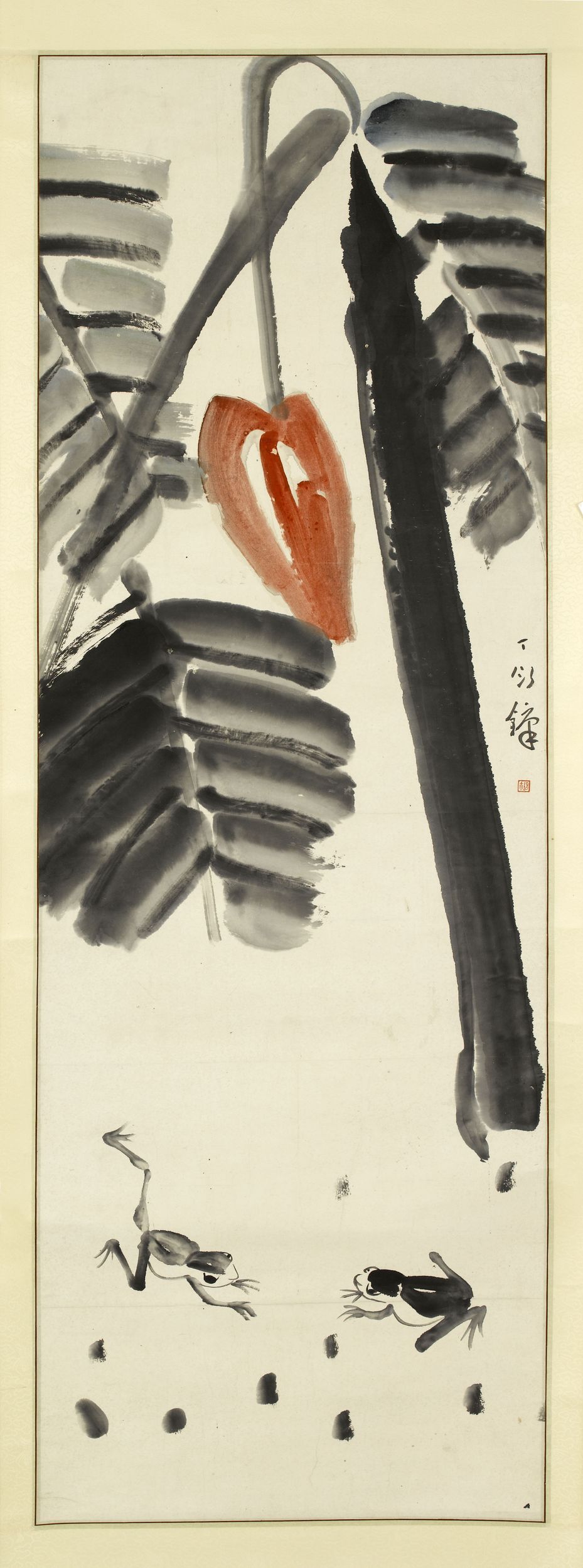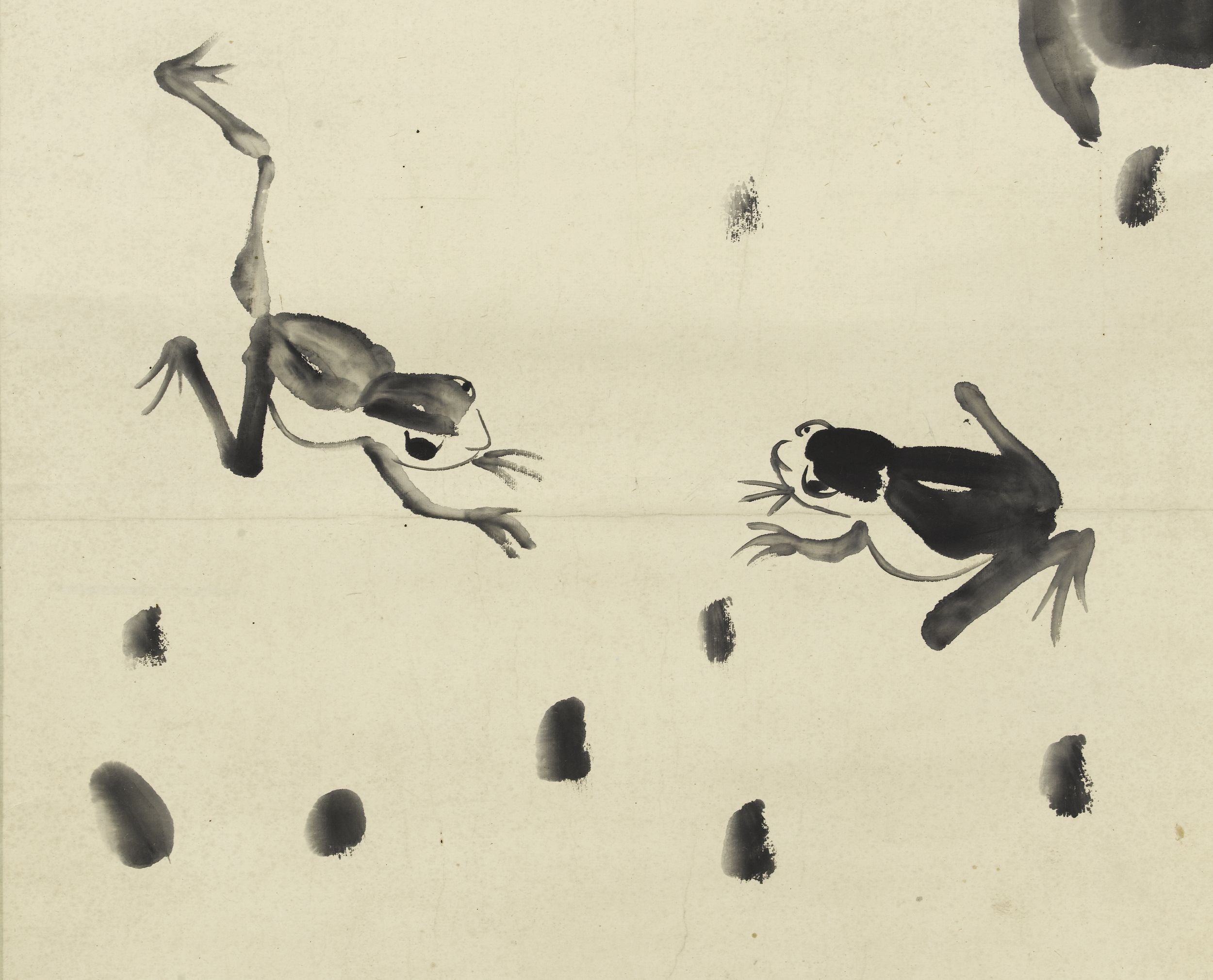
Après la pluie
Papier, Encre, Couleurs - Pigments
Peinture
丁衍鏞
Achat en vente publique
M.C. 9791
Ding Yanyong was born in the province of Canton (Guangdong). He was sent to Japan as a student, enrolling at the Tokyo Fine Arts School the following year. There, he learnt to draw and to paint in oils, and familiarised himself with the work of the Fauvist painters, who were exercising considerable influence on part of the Japanese art scene at the time. This discovery left a lasting impression on Ding Yanyong, both in his palette and in his expressive use of line. On his return to China towards the mid 1920s, he settled in Shanghai, where he taught Western painting. In this period he was drawn to modernists such as Guan Liang (1900-1986). From 1928 to 1932, he stayed in Guangzhou: his practice of Chinese painting dates from this time. In the years preceding the war, he was once more working in Shanghai. During the war he returned to Guangzhou, before taking refuge in Sichuan in 1941. In 1949, he left China and settled in Hong Kong, where he taught while continuing to practise Chinese and Western painting techniques, “infusing his dual approach with the same spiritual elan and formal rhythm”.
After the Rain is an example of Ding Yanyong’s ink work from the 1940s. His references are to be found among the great past masters, such as Zhu Da for his expressive animal figures, or Xu Wei, from whom he might have borrowed the powerful line of the banana leaves. But there is also a connection with the work of his elder and contemporary Qi Baishi, visible in the comical treatment of the frogs. The banana flower whose bright red hue draws the eye in the centre of the composition recalls the palette of Ding Yanyong’s “Fauvist” works, although painters such as Qi Baishi, who had not been exposed to the same influences as Ding Yanyong, introduced similar chromatic effects in their compositions. The subject of frogs playing around a banana tree was treated again by the painter in the last years of his life; in these works, the contained humour of the Cernuschi Museum painting gives way to a comical spirit that is characteristic of the artist.
Vadime Elisseeff, Exposition de peintures chinoises contemporaines, Paris, Musée Cernuschi, 1946
